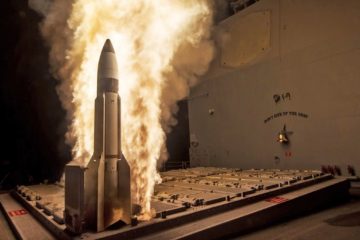South Korean company Hanwha Ocean, part of the Hanwha Group, was showcasing for the first time in Europe a model of the KSS-III (Dosan Ahn Chang-ho or Jang Bogo III class) submarine in its latest Batch II version. Construction of the first ship of this type began in March this year. This is Hanwha Ocean’s response to the Orka program, under which the Polish Navy is to receive new submarines. The number of vessels has not been announced at this time.
Hanwha Aerospace has already secured billion PLN contracts in Poland to supply K9 Thunder self-propelled howitzers and K239 Chunmoo self-propelled multiple launch rocket system (MLRS). These successes convince the company’s management that Hanwha Ocean’s prospects are high.
“As we have been building a relationship of trust since last year, we believe Hanwha Ocean’s access [to the Polish Navy] will be easier. In terms of technology, Poland has made many requirements, but I think the South Korean solution will meet them all. The key requirement is the ability to provide maintenance capabilities, which we can adequately provide.”
Lee Boo-hwan, head of Hanwha Aerospace Co.’s European unit (click here for source)
Orka Program
On July 14 of this year, the Polish Armament Agency published an RFI (Request for Information) for submarines. It specified that the future Orka submarine is to have an autonomy of not less than 30 days and the ability to dive to depths of more than 200 meters, as well as the ability to:
– attack surface and underwater targets with torpedoes and missiles;
– attack distant land targets with cruise missiles;
– attack air targets with missiles (helicopters in flight and hover and maritime patrol aircrafts);
– deploy hard kill and soft kill anti-torpedo systems;
– deploy special forces;
– be compatible with a rescue vehicle;
– lay sea mines;
– operate ROVs and AUVs.
In addition, the following were considered: the use of AIP (Air Independent Propulsion); logistics package; crew and shipyard personel training package; submarines delivery schedule.

In total, eleven companies submitted proposals in response to the RFI: Hyundai Heavy Industries Co. Ltd, Saab Technologies Poland Sp. z o.o., Navantia, Naval Group, ThyssenKrupp AG, Hanwha Ocean Co. Ltd., Fincantieri S.p.A., Aycomm Sp. z o.o., Volue Industrial IoT, Babcock International Group plc., JFD.
The above list includes renowned submarine manufacturers (Hanwha Ocean, Hyundai, Saab, Navantia, Naval Group, thyssenkrupp Marine Systems and Fincantieri). In addition, companies supplying electronic systems, including communications, combat management systems and sonars (Volue Industrial), offering service and life-cycle maintenance (Babcock), or producing deep-sea rescue systems and submersible vehicles for special forces (JFD) participated in the talks. For now, specific bids are not expected. These will emerge in the next phase of the Orka program.
Korean proposal
The KSS-III “on paper” meets most of the Polish MoD’s initial requirements. It is also the only one of the potential competitors already integrated with vertical missile launchers (The Batch I submarines feature 6 VLS while the Batch II boats have 10 of them). However, the Korean company could face some potential difficulties; Despite the significant use of Korean systems, some systems aboard the KSS III submarines come from European companies. They will have to agree to re-export their products. Besides, it is unofficially said that the KSS-III is not the most popular among Polish submariners, who consider the vessel too large for the Baltic Sea. On the other hand, it must be remembered that the decision to purchase submarines will be political.






